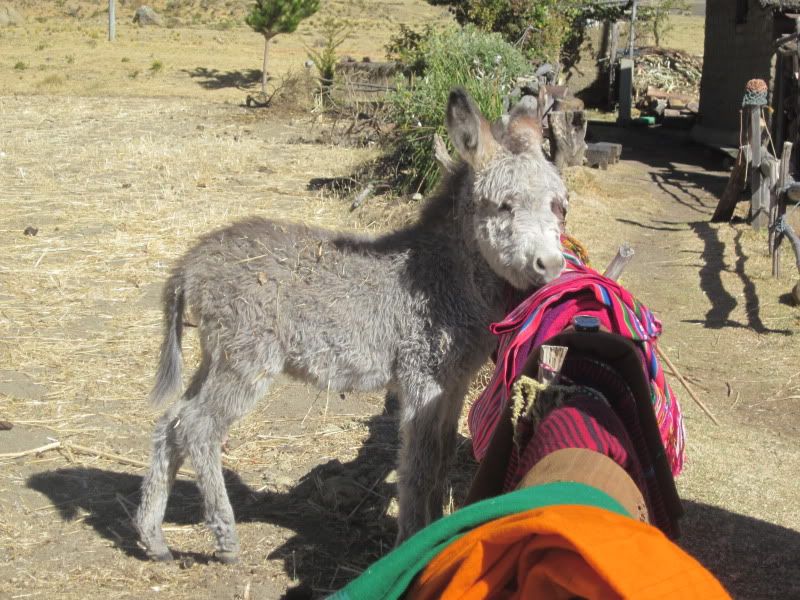
Sam, a three month old donkey.
This was my second trip to Santiago de Okola, so I will try not to repeat information from what I posted last year. This time, we had a bit of a shorter trip, but it was a good trip for me since I got to stay with a fantastic host, find out how climate change had impacted the village over the last year, and I didn't get a sunburn this time.

Beautiful Santiago de Okola on Lake Titicaca
This year, I stayed with a man named Don Juan Cayo and his very sweet wife whose name I didn't learn. I relied on my roommate Christina for translation a lot of the time, and she spent more time chatting with our hosts and learning about their family than I did. Don Juan has five children, all grown and gone. They live as close as La Paz and as far away as Brazil, and they work in professional careers, not farming. This seems to be a major problem here, as young people leave the villages and the culture is lost as a result. Fortunately, there are a few young people who are still around in Santiago de Okola and they will carry on the traditions for the next generation.

The family we stayed with: Don Juan Cayo, his wife (whose name I didn't learn), and his dog Beethoven posing with Christina and me, with their home in the background.
We began our morning there with a textiles workshop, mostly a repeat for me but with a new component - learning how to spin yarn from wool. I half paid attention and half looked around at animals and crops nearby. As you can see below, a little bunny appeared near us and while it was not in a cage of any sort, it was a breed that is raised for meat, so it definitely belongs to somebody who wants to eat it.
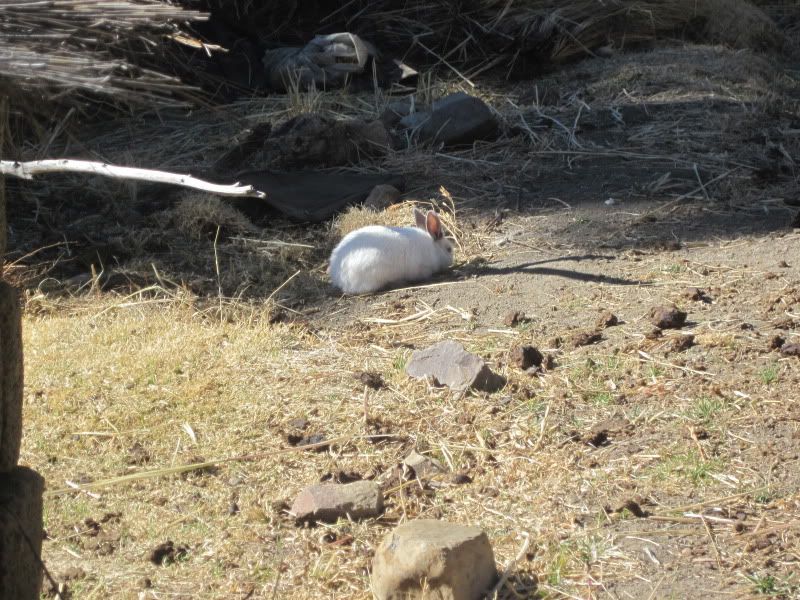
A California rabbit, a meat breed.
This region of Bolivia raises a lot of sheep. In Santiago de Okola, they sheer their sheep the Monday before Ash Wednesday each year.
My roommate, Christina, began by learning to spin yarn. She encouraged me to give it a try and I did - with terrible results. It turns out that everything was set up for right-handed people only. I could do everything with my left hand but that only unspun the yarn. Whoops. I gave up since it seemed pretty futile once I realized that.

Peggy with balls of yarn spun here from wool produced here

Yarn

My roommate Christina learns to spin yarn from wool.

Spinning

Christina's figured it out. Can I? (Yes, I look ridiculous in these clothes - but I didn't get a sunburn this year! I brought pants I could've worn but they would have fallen on the floor of the bathroom every time I used the squat toilet so I went for these silly looking shorts.)

We're not set up for left handed people here. All I can do with my left hand is UN-spin the yarn.
Everyone also tried their hands at weaving. I didn't bother this year - I tried last year and it's hard! The women here can weave one of these beautiful cloths in just seven to ten days!

Paul tries weaving (It's harder than it looks!)

Tanya gets a weaving lesson.

She's pretty good at it!

Ooh pretty!
The highlight of the morning for me was a burrito. By which I mean, a baby donkey (burro in Spanish). His name is Sam and he's just three months old. He wears a traditional little amulet around his neck to protect him from feeling afraid when he wanders far from home. The amulet is a bag around his neck contains garlic and salt, among other things. Baby donkeys wear these in Bolivia. Donkeys here are used as pack animals (they can carry more than a llama), although donkeys milk is sometimes used medicinally.

Don Tomas with Sam the Donkey
After the textiles workshop, we finished by dressing up some members of our group as the traditional Aymara community leaders. The man is called a jilakata and the woman is a mamat'halla
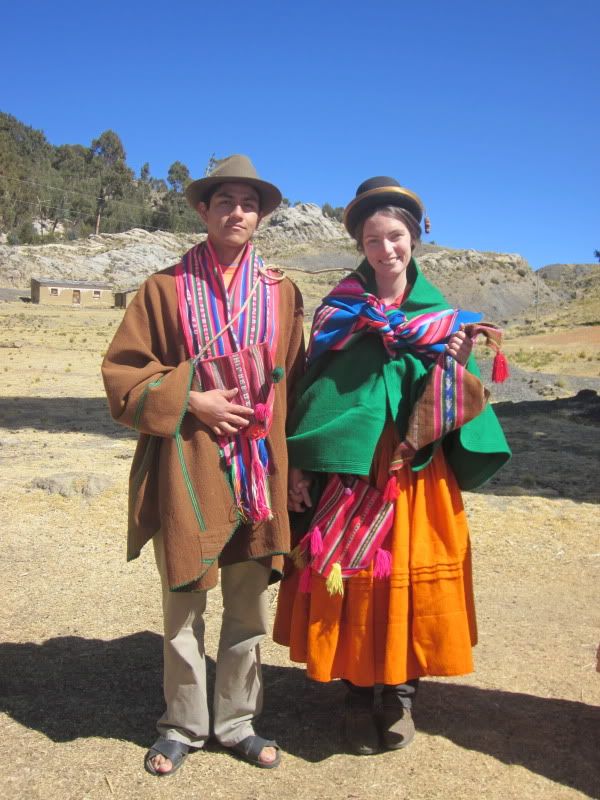
Tour guides Gabriel and Tanya dressed up as traditional Aymara town leaders.
All around the town, we could see the remains of last year's harvest.
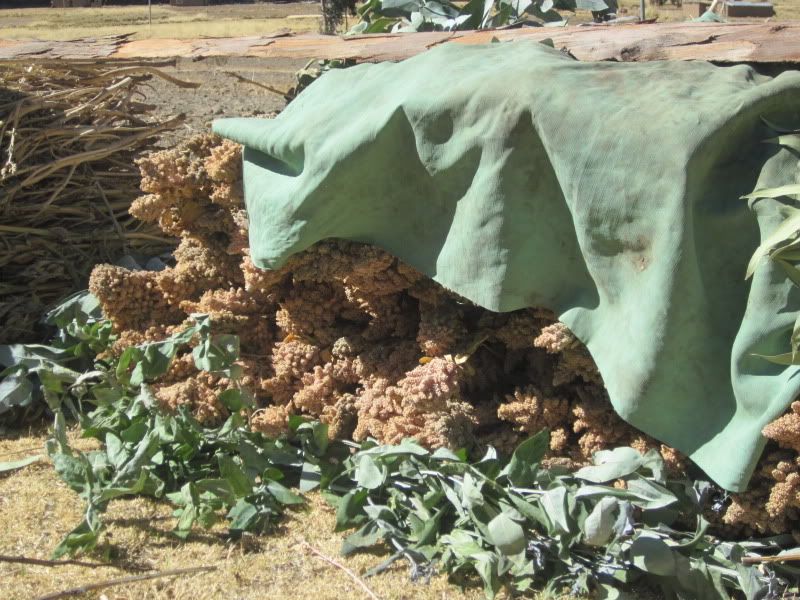


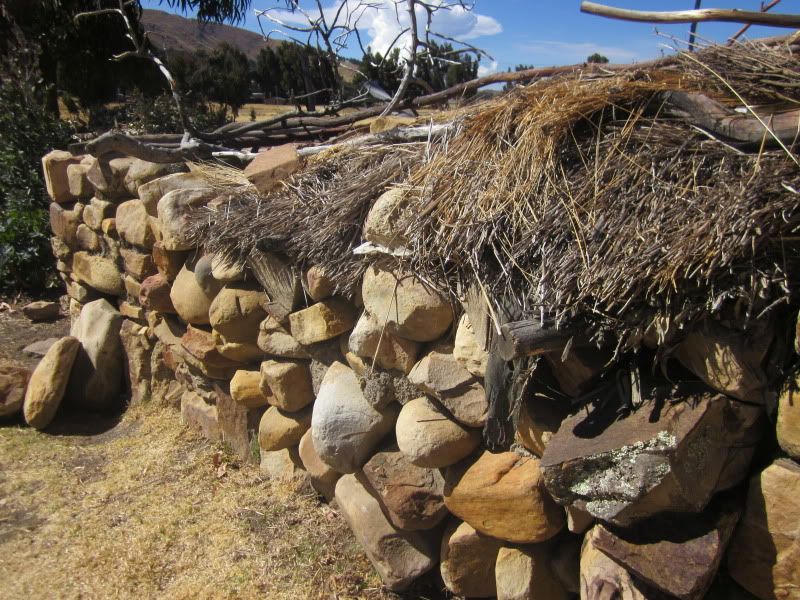
This little stone enclosure is "baaa"-ing... turns out it contains a mama ewe and a few lambs.
We also saw people winnowing the harvest (i.e. separating the chaff from the grains) and making chuño, a form of freeze-dried potatoes. Chuño can keep for up to five years. Because of climate change, the people here are having a hard time making chuño because they don't get enough freezing nights during the right time of year - although they ARE getting some unseasonable freezes at the WRONG time of year that occasionally kills their crops.

Winnowing the harvest

Making chuño
Don Tomas, one of the leaders of the community, took us on a quick community tour to the beach. The rainy season should be starting soon although with climate change it now starts a few months late. People are still beginning to prepare for planting, hoping the rains will come on time.

Algae on Lake Titicaca used for fertilizer
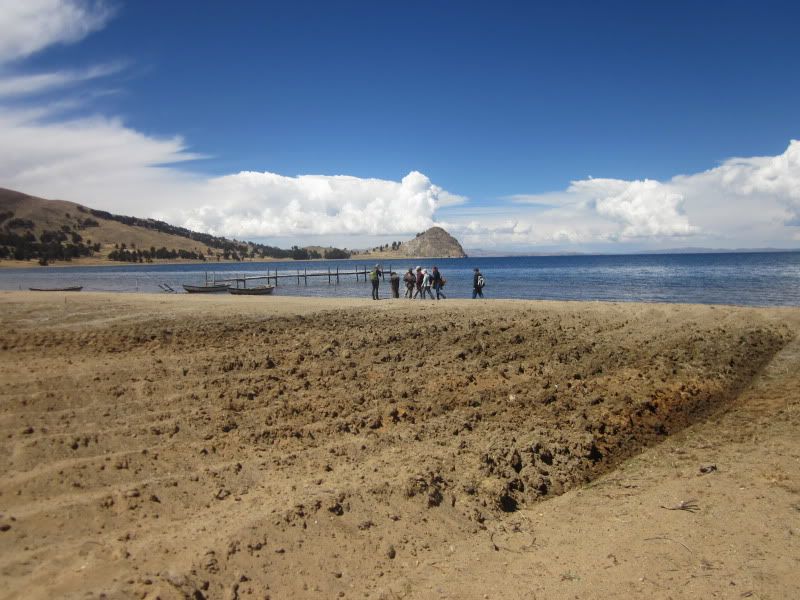
The beach, prepared for planting of potatoes and favas.

Our group on the beach.

A woman walks home with gathered sticks.
While we walked, Don Tomas told us legends about a sacred beach. People can visit there, but if they stay the night, the duende (an evil dwarf) will come and get them. Don Tomas told us several stories of people who experienced this.
Someone in our group asked him to tell us about the legend of the anchancho. The anchancho is like the devil. He takes people away and when they wake up, they are hugging a stone or a bush and they are bleeding from the mouth. Perhaps I can find more information on the duende and the anchancho to share by updating this past in the near future. I'm not finding anything online that especially resembles the beliefs in Santiago de Okola.
As we did the year before, we saw an interesting plant on the beach. It was easy to recognize as a nightshade. The local name for it is tacachilla. (Possibly Solanum nitidum?) In the past, the red fruits were used to make dyes. Humans do not eat this plant.

Tacachilla, a nightshade fruit used as a dye in the past.

Flowers of the same plant.
Back at the home of Don Tomas, we had a traditional Aymara potluck meal, called an aptapi. During the meal, I tried to get pictures of the chickens, because I find it interesting to look at what breeds of animals people keep, whether they use specific breeds, or "criollo" (creole) breeds that have evolved here. The criollo chickens are very unique looking. They've got a tiny bit of a crest, and some have feathery feet. They have four toes, not five. I would imagine that their big fat size and all of their fluff would help them stay warm on cold nights here. Plus, they have enough meat on them to make them a good meat breed. They are kept for both meat and eggs.

The unique looking criollo breed of chicken

A close-up


This one looks like a Buff Orpington
No comments:
Post a Comment